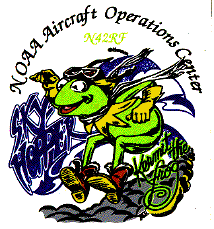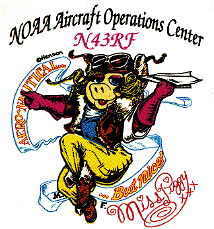|
| 
The two WP-3D airplanes operated by NOAA's Aircraft Operations Center constitute a unique resource for airborne hurricane research, and for atmospheric research in general. They are civilian versions of the U.S. Navy's P-3 four-engine maritime reconnaissance airplane. The NOAA airplanes, N42RF and N43RF, were commissioned in the late 1970s. They offer long range (3000 nmi) and duration (10 h), moderate ceiling (30000 ft), large fuselage volume, substantial payload, ability to carry non-aerodynamic external sensors, and a track record of safe operation in convection and turbulence. In addition to the weather-avoidance radar mounted in the nose, they carry two scientific radars: a 5 cm wavelength PPI radar in a radome below the fuselage and a 3 cm wavelength RHI radar in the tail radome. The latter radar rotates in a vertical plane perpendicular to the aircraft track and has a Doppler processor. The P-3s determine in-situ precipitation size spectra and phase with laser imaging instruments. They can deploy dropsondes to measure wind and thermodynamic properties and winds below flight level and sense surface winds remotely with active and passive microwave instruments.  Return to aircraft page |
 | ||||
|
Links of Interest
AOML Tools & Resources
Employee Tools
|
